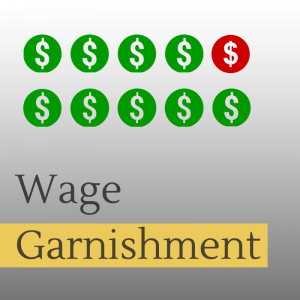Accounting
Study: Wage Garnishments a Headache for Millions of Americans and Employers
More than 7 percent of U.S. workers are currently having their wages garnished, most of them for either child support payments or tax debts, according to a new study from payroll and human resources provider ADP.
Sep. 18, 2014

More than 7 percent of U.S. workers are currently having their wages garnished, most of them for either child support payments or tax debts, according to a new study from payroll and human resources provider ADP.
The first-of-its-kind report from the ADP Research Institute shows trends in U.S. wage garnishments, which can have a significant impact on both employees and employers, according to the study. Employees who have their wages garnished can find it humiliating and stressful, often resulting in decreased workplace productivity and motivation.
Employers may be exposed to financial risk when their employees’ wages are garnished by becoming liable to creditors for an employee judgment if they do not assist with the garnishment appropriately. A lack of data about current trends in U.S. wage garnishments led the ADP Research Institute to analyze aggregated, anonymous payroll data from 2013 comprising 13 million employees age 16 and older.
“We conducted this study in order to paint a clearer picture of current garnishment trends among U.S. workers,” said Ahu Yildirmaz, vice president and head of the ADP Research Institute. “ADP’s robust data set allowed us to bring some clarity to a process that affects a large number of people, the scope of which has been poorly understood.”
The study also found that the manufacturing sector has the highest percentage of companies with garnished employees at 48 percent, followed by the transportation and utilities industry at 42 percent. Companies in the professional and business services, financial activities, and education and health services industries have the lowest rate at 23 percent for each segment. This disparity suggests a possible relationship between garnishment and blue- and white-collar job categories.
Other key findings from the study include:
- The highest garnishment rate is 10.5 percent among employees age 35 to 44, which is typically the age of peak debt load, child rearing and divorce.
- Garnishment rates are highest among those earning $25,000-$39,999 per year with 10 percent of these workers having their wages garnished.
- For nearly all categories of garnishments, the rates are similar for men and women with the exception of child support: 5.8 percent of male workers versus only 0.6 percent of females. This finding may reflect that more women than men have physical custody of children, and men are more likely to be required to pay child support.
- The Midwest has the highest garnishment rate at 8.9 percent of employees, compared to the Northeast, which has the lowest rate at 4.9 percent. This disparity may be related to a higher concentration of manufacturing companies being located in the Midwest.
“Through helping businesses process wage garnishments, we’ve seen the impact they can have on employees and employers alike,” said Julie Farraj, vice president of ADP Wage Garnishment Services. “Raising awareness about garnishments can help employers and employees work together to manage what sometimes can be a difficult process.”
An ADP Research Institute white paper outlining the study’s key findings is at Garnishment: The Untold Story.
